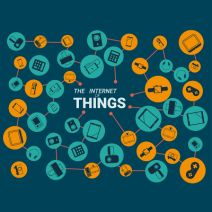Directive Blogs
Making Sense of How the Internet of Things Applies to Different Industries
 The Internet of Things (IoT) is changing the way that businesses approach technology solutions, but its biggest impact might be in the consumer environment. With so many new devices connecting to the Internet and communicating with each other, it can be difficult to slap a label on the Internet of Things and associate it with the countless devices being created every day.
The Internet of Things (IoT) is changing the way that businesses approach technology solutions, but its biggest impact might be in the consumer environment. With so many new devices connecting to the Internet and communicating with each other, it can be difficult to slap a label on the Internet of Things and associate it with the countless devices being created every day.
You can think of the Internet of Things as a group of mostly consumer-related devices that wouldn’t ordinarily have Internet access, which have been granted connectivity and the ability to communicate with one-another. Gartner predicts that there will be approximately 26 billion IoT devices by 2020, with other aggregates putting the figure as high as 30 billion. In many cases, these devices are small and relatively inconsequential, like fitness-related wearable devices designed to monitor someone’s heart rate or physical progress.
Other, more complicated Internet of Things devices could range from small household appliances, to computerized motor vehicles. Items like thermostats and refrigerators are commonly seen connecting to the Internet so that they can be controlled or monitored through a connected smartphone app, regardless of where the user is. Even in various industries, the Internet of Things is a tool that helps keep operations moving forward without a hitch. Take, for instance, these examples of how the IoT has been applied to specific industries:
- Manufacturing: Manufacturing plants use IoT devices to not only monitor progress of product assembly, but also for automating process controls, safety features, and security measures. In other words, the IoT devices used by manufacturers are mainly used to optimize the functionality of the plant.
- Energy management: Some manufacturers are using IoT devices to monitor energy-consuming devices, and control these devices to ensure the maximum amount of energy is saved. Many of these devices are either set up to allow for remote control, or for access via a cloud-like interface.
- Medical and healthcare: On the medical front, IoT devices are capable of remotely monitoring medical equipment for information like blood pressure, heart rate, and other vitals. There are even pacemakers, insulin pumps, and other medical devices that are capable of connecting to the Internet and can be controlled remotely.
- Building and home automation: Some of the great IoT devices in the home automation industry include the aforementioned thermostats, garage doors, security cameras, lighting systems, air conditioning, and any other minor appliances that can be controlled remotely via a smartphone.
Security Issues and Discrepancies
With so much connectivity, security is a major issue and something to be considered when using any IoT device. Indeed, IoT devices present a unique challenge in keeping your network as free of them as possible, or at least minimizing your data’s risk of being accessed by one of them. Since these devices communicate with each other, if even one of them is compromised, you could be looking at a potential data breach. This is why it’s so important to both enforce a Bring Your Own Device (BYOD) policy in the workplace, as well as to manage the permissions and restrictions of devices on your network.
If your business is having trouble managing the threat that the Internet of Things presents, Directive can help your organization sharpen its focus on them. To learn more, give us a call at 607.433.2200.

